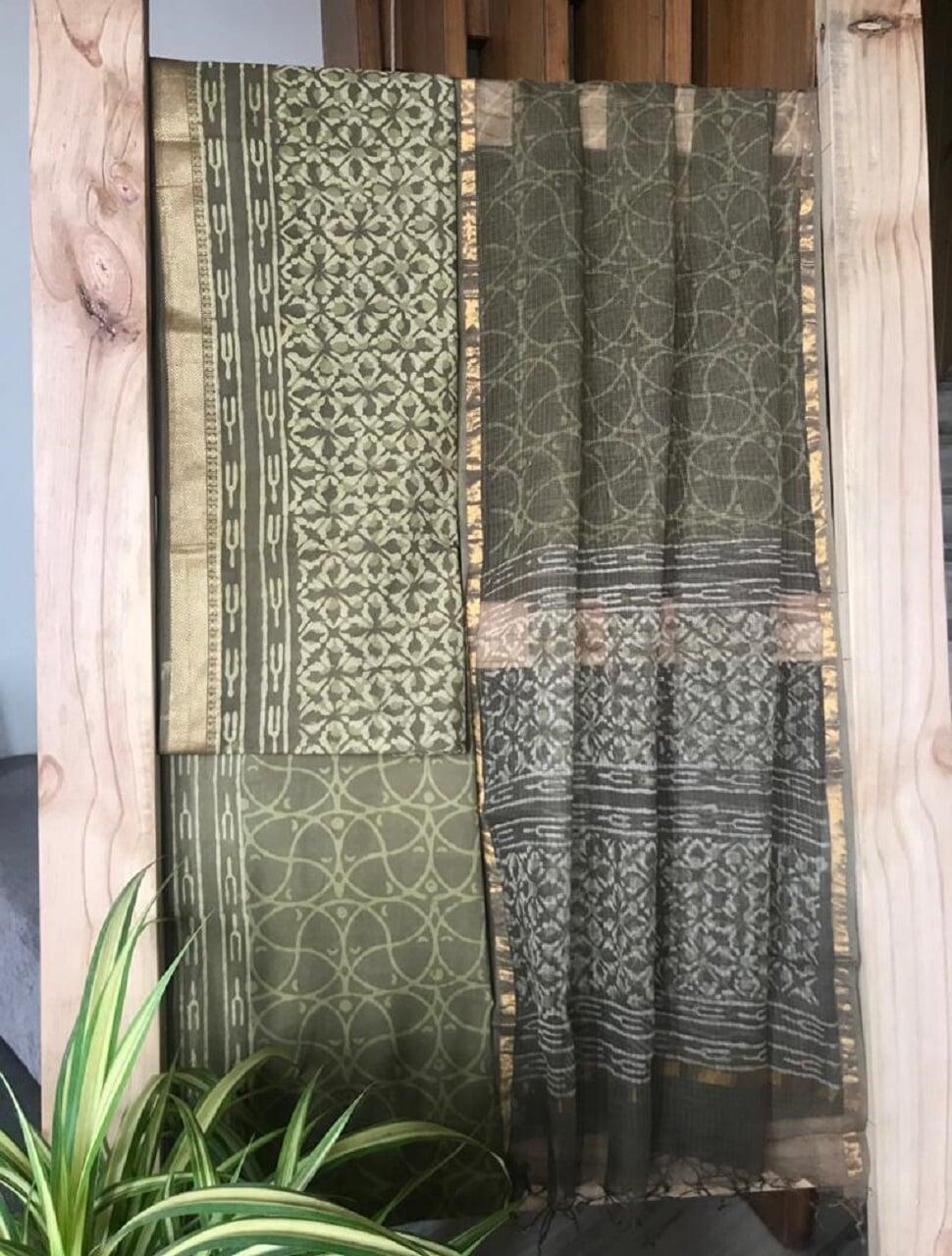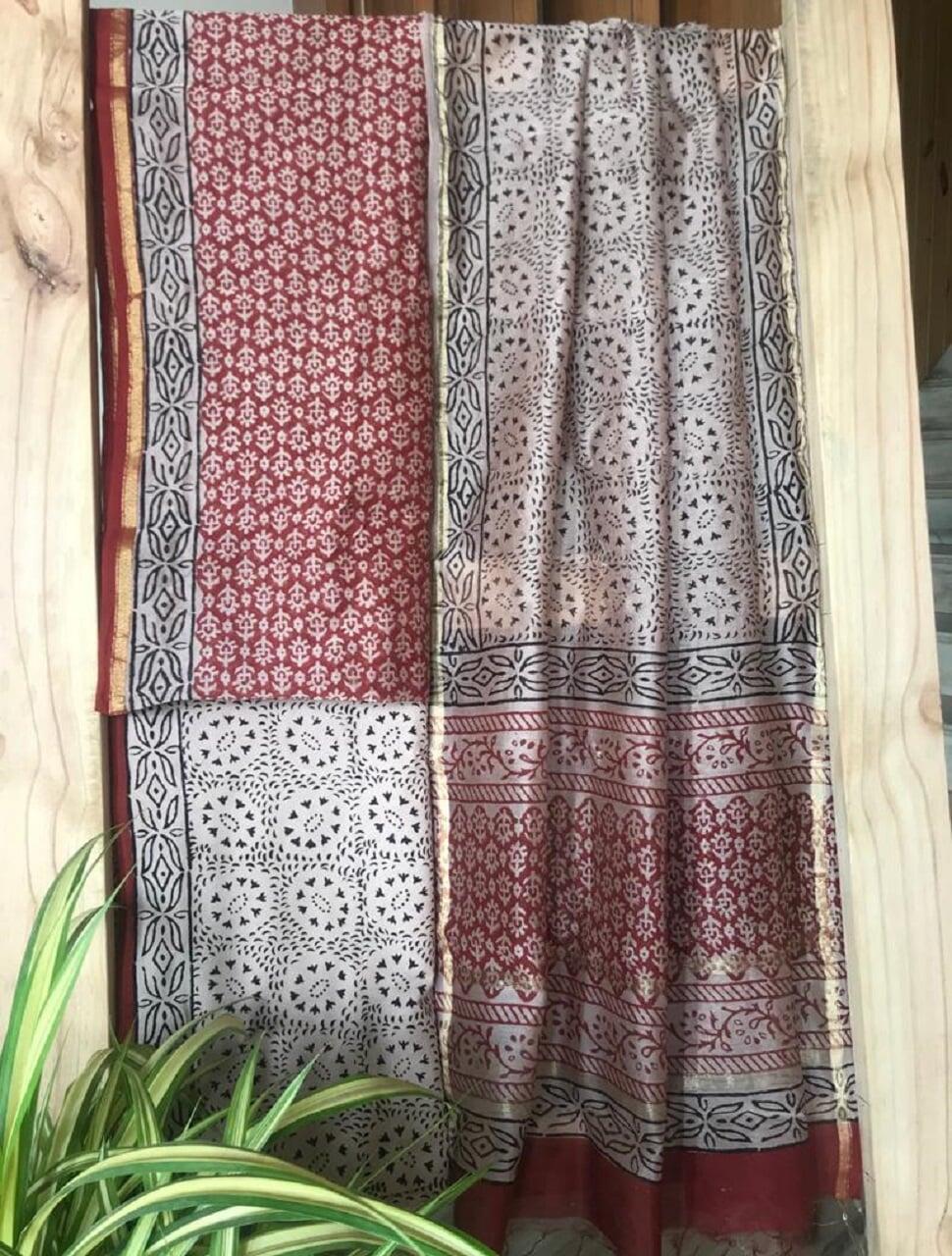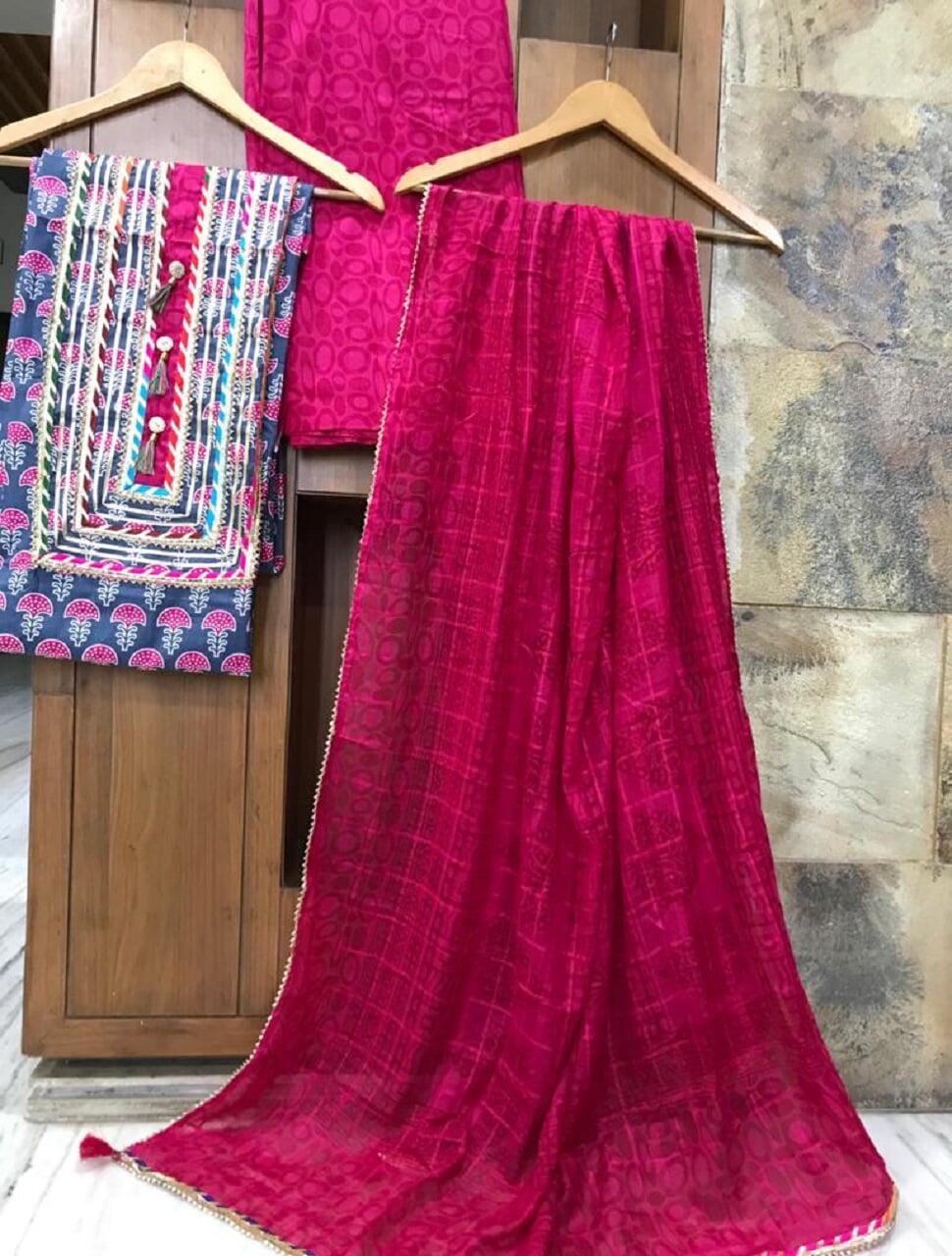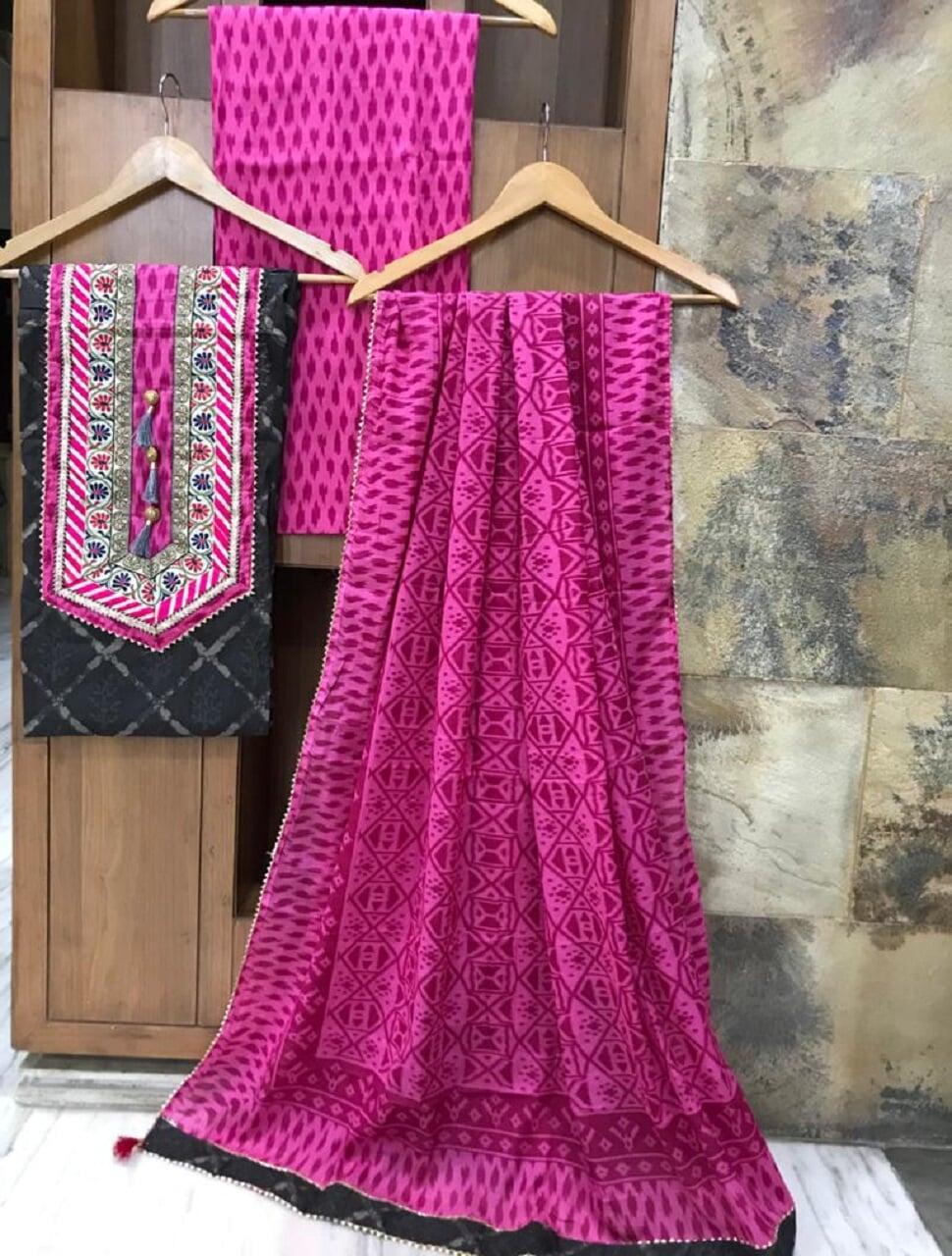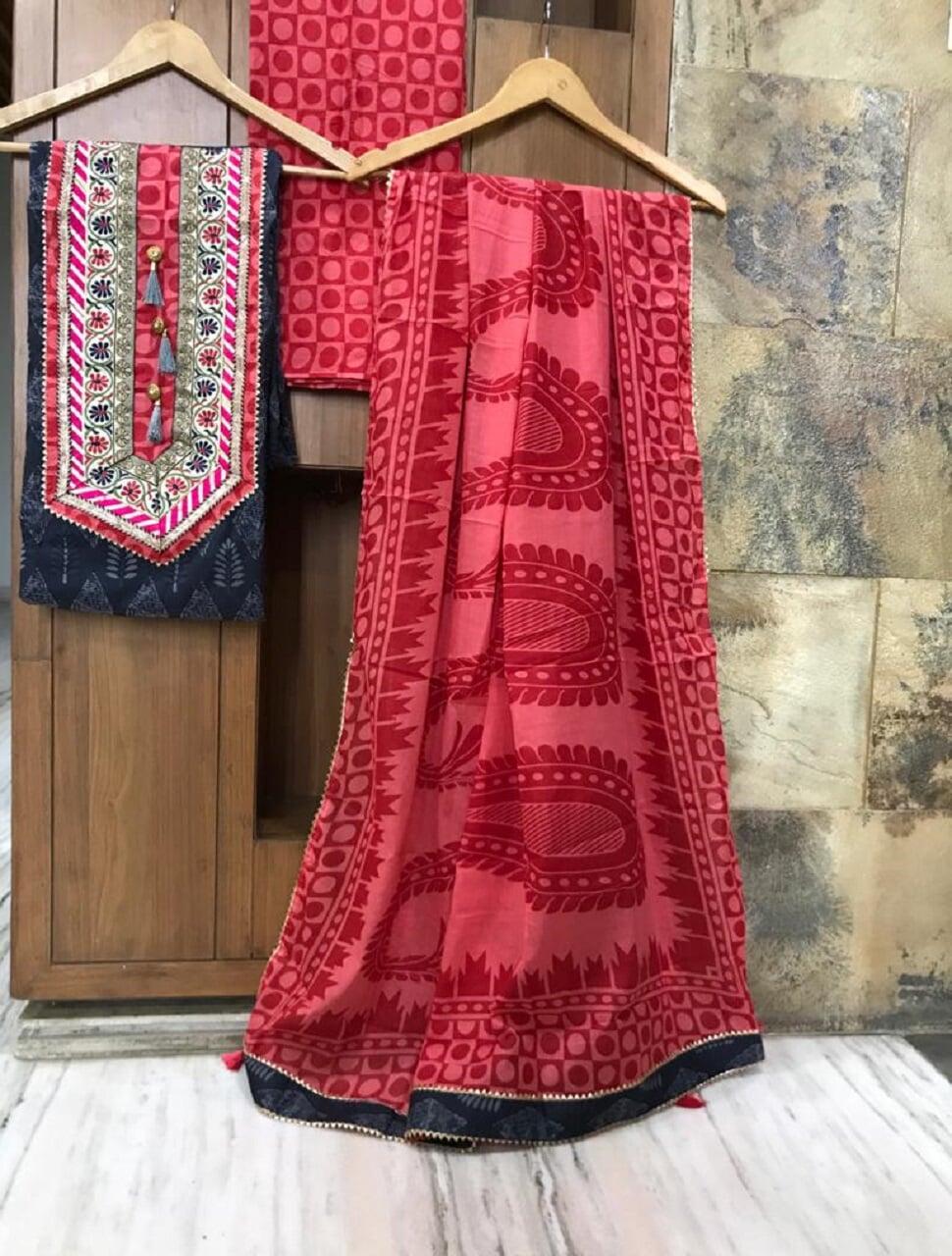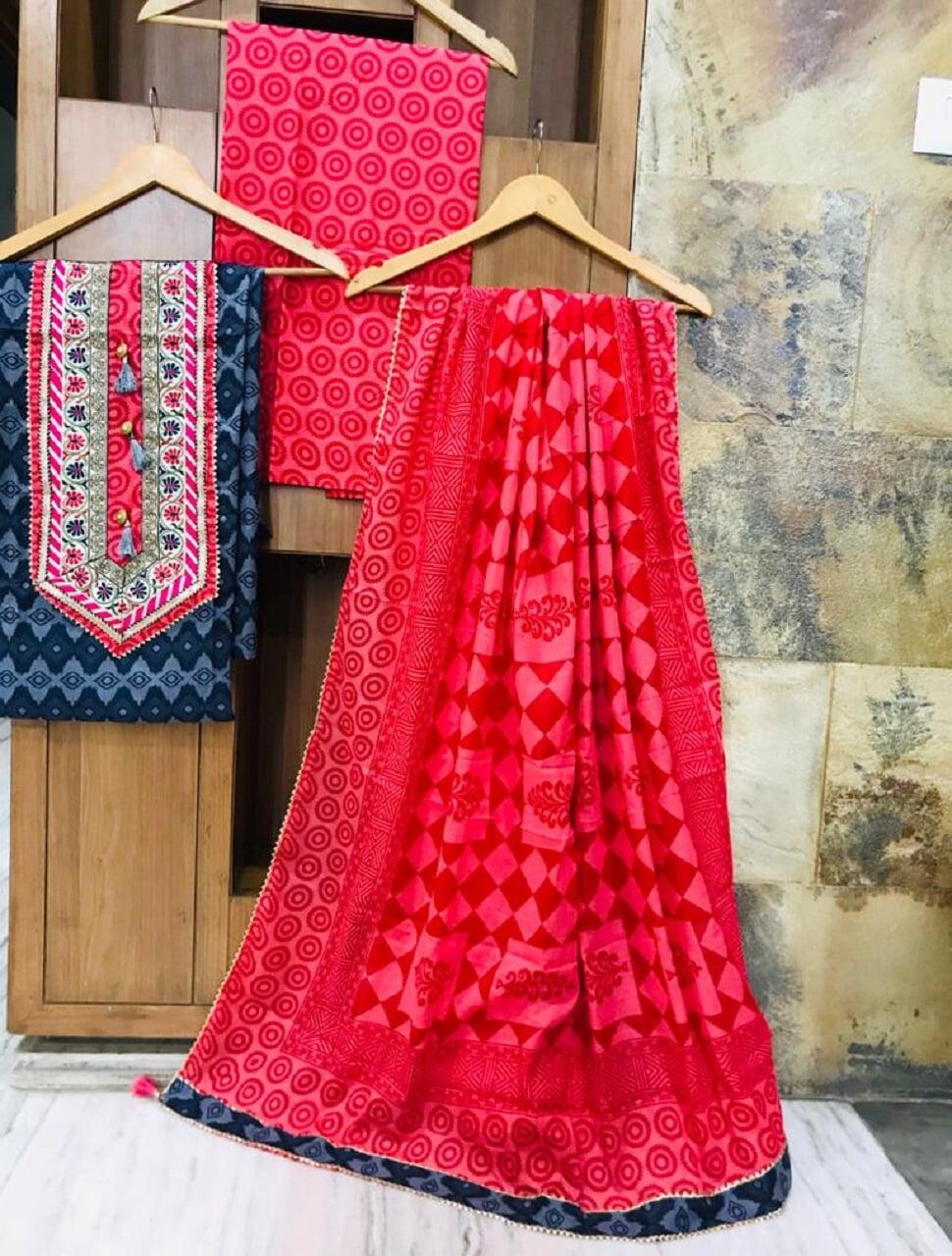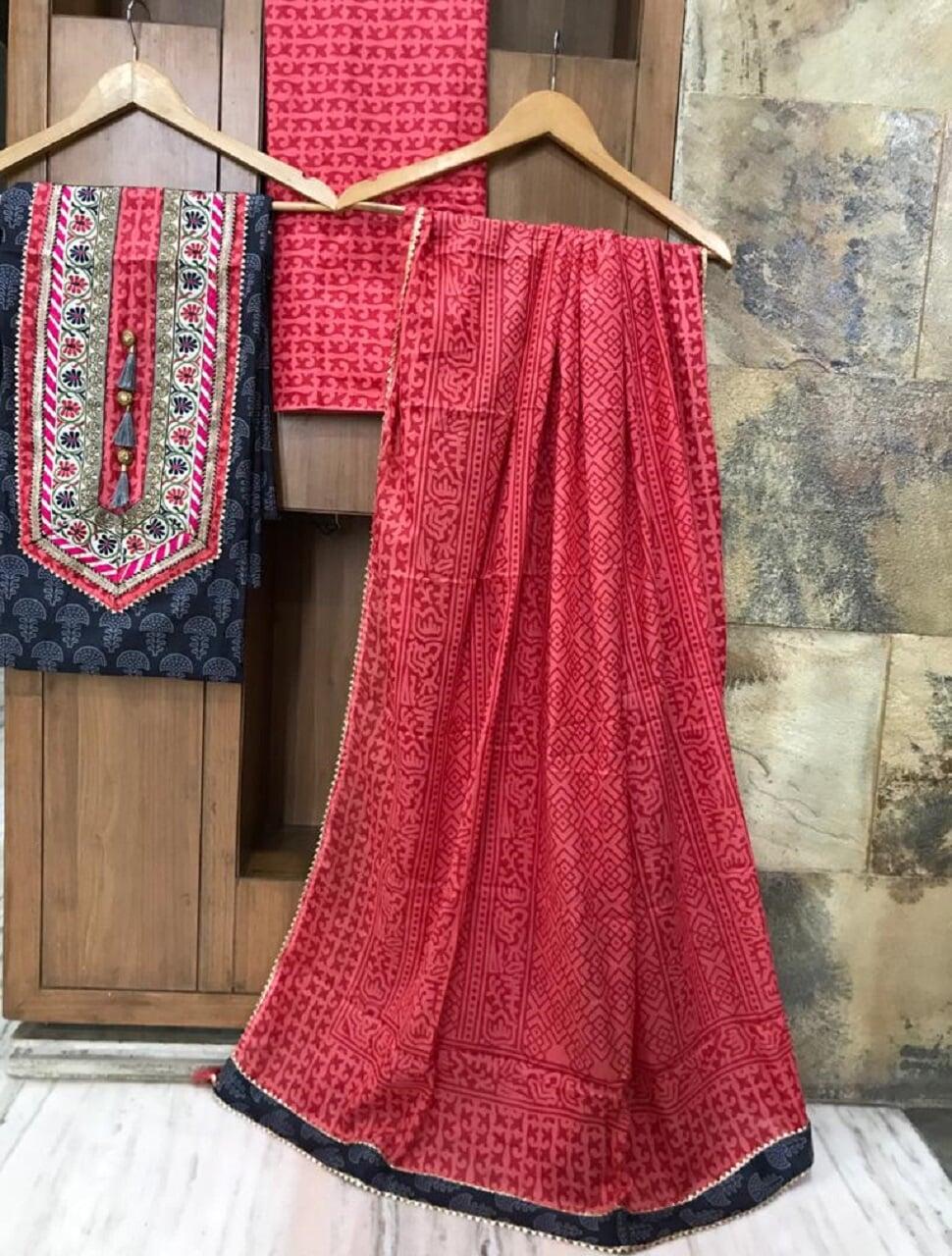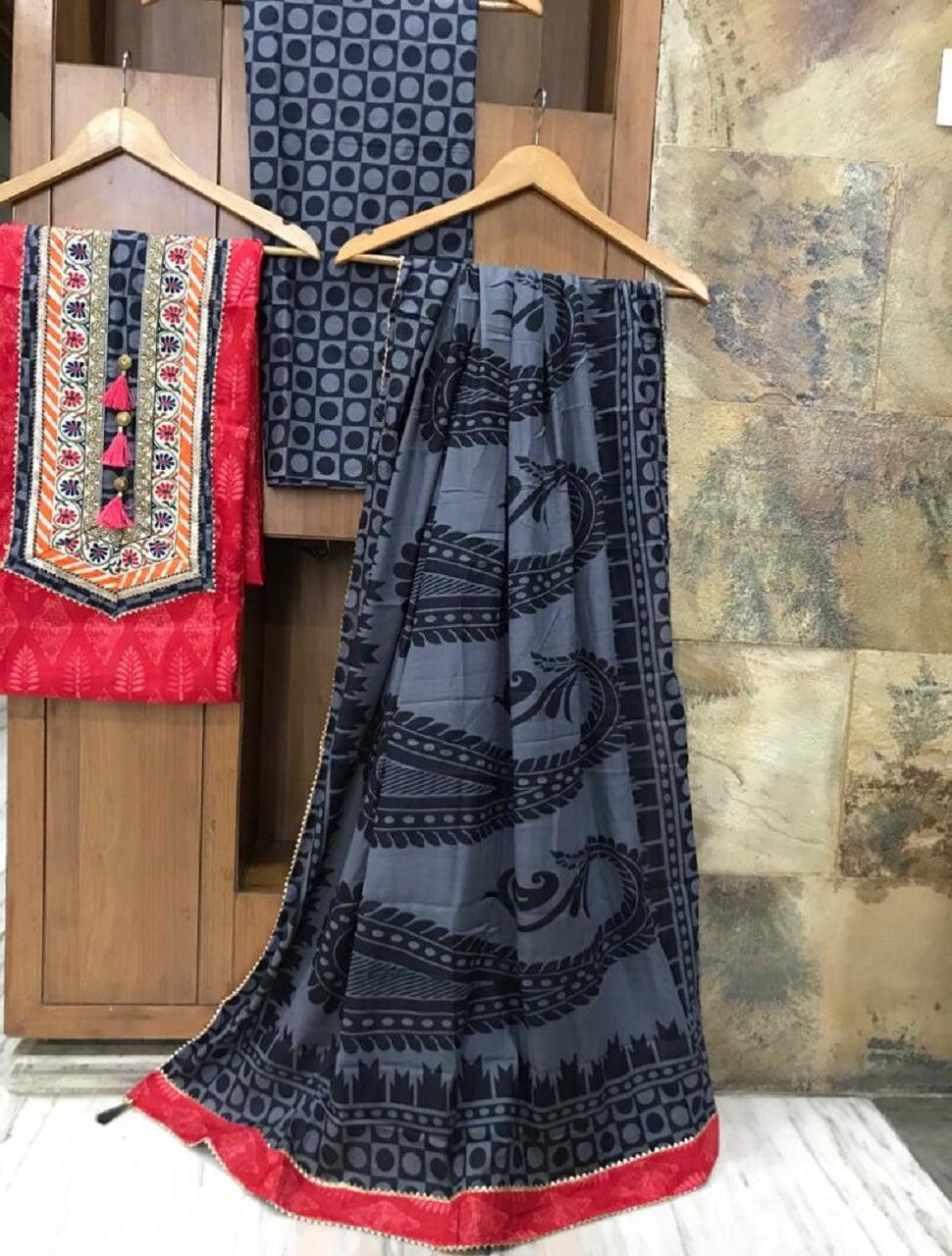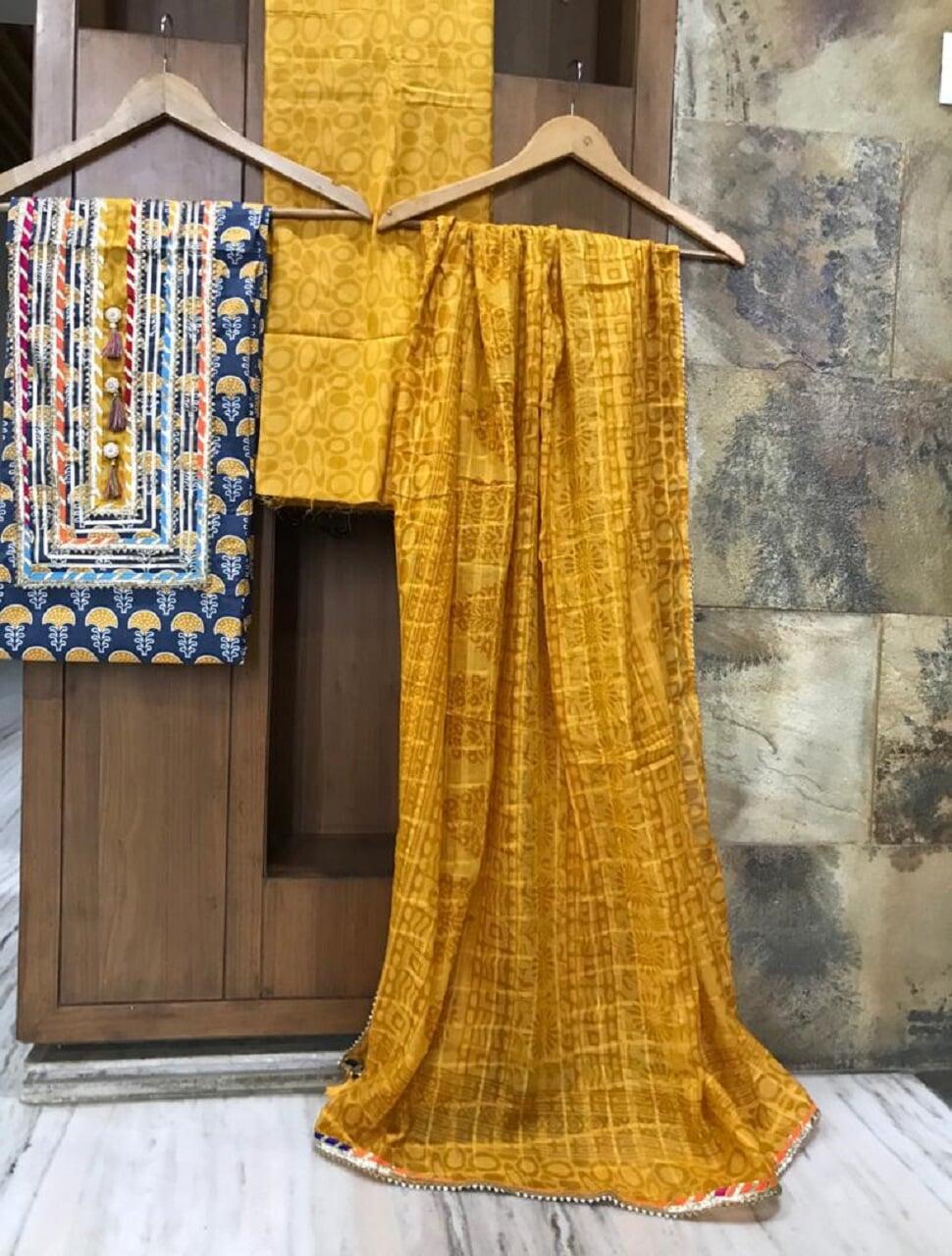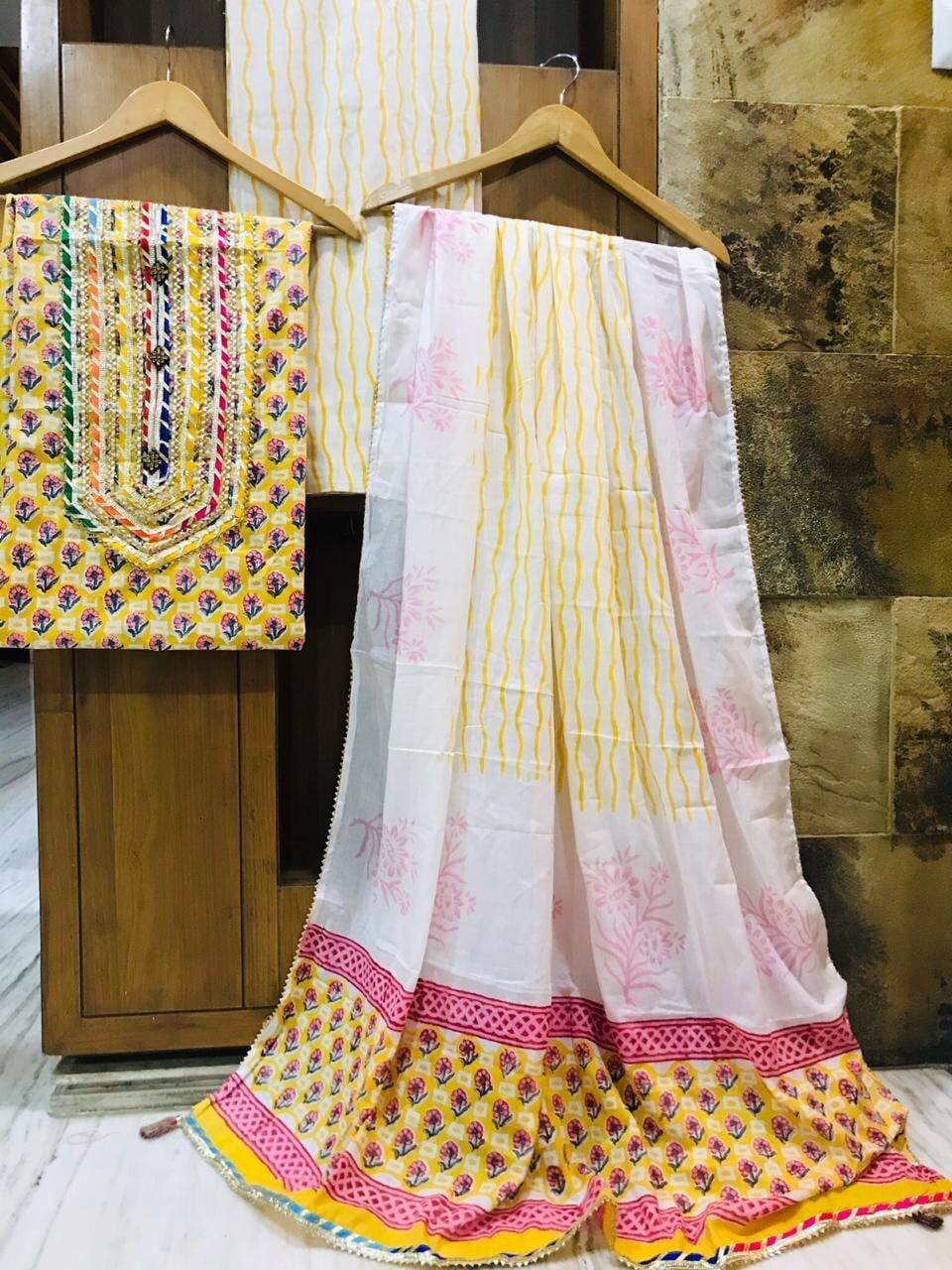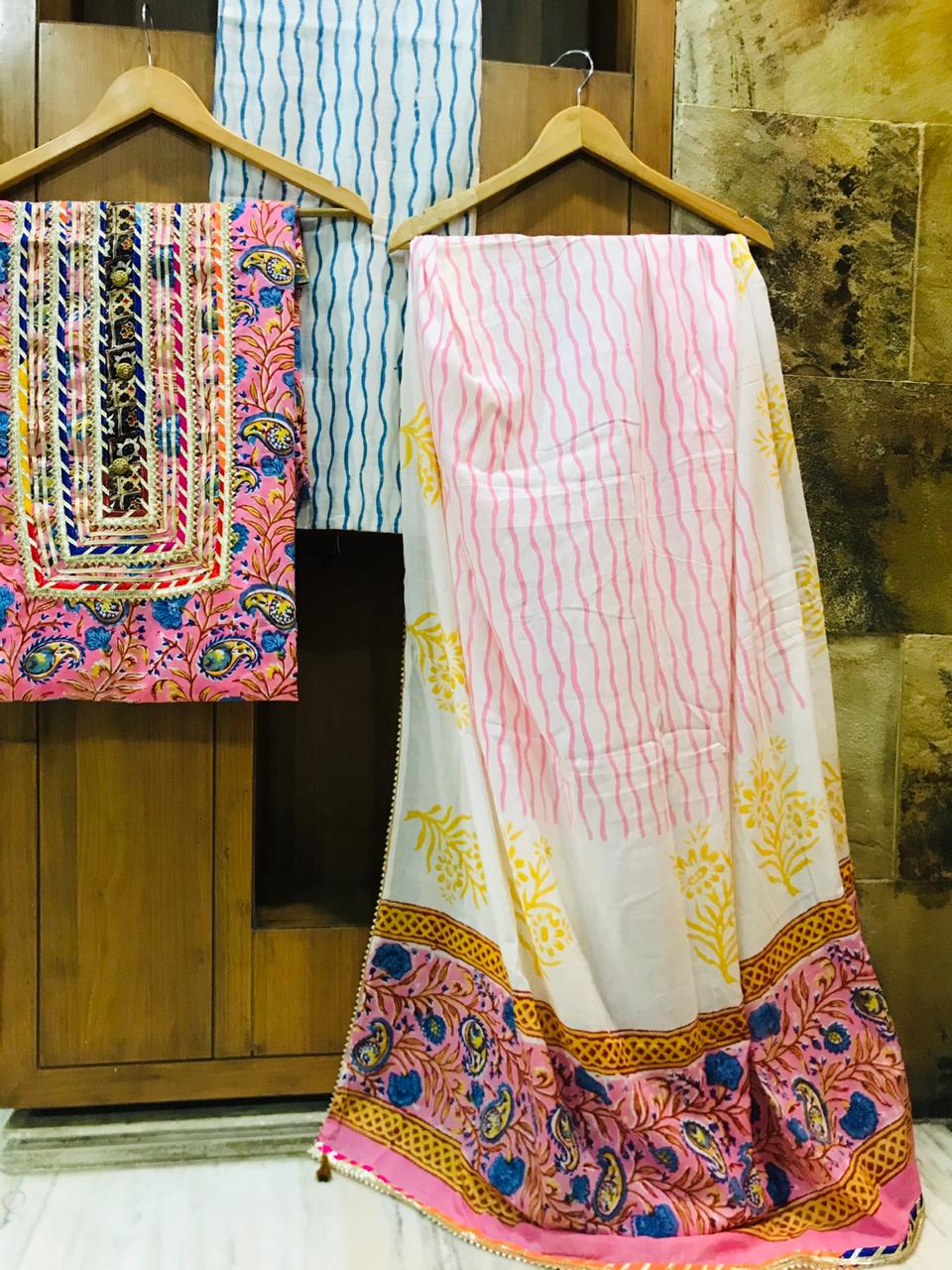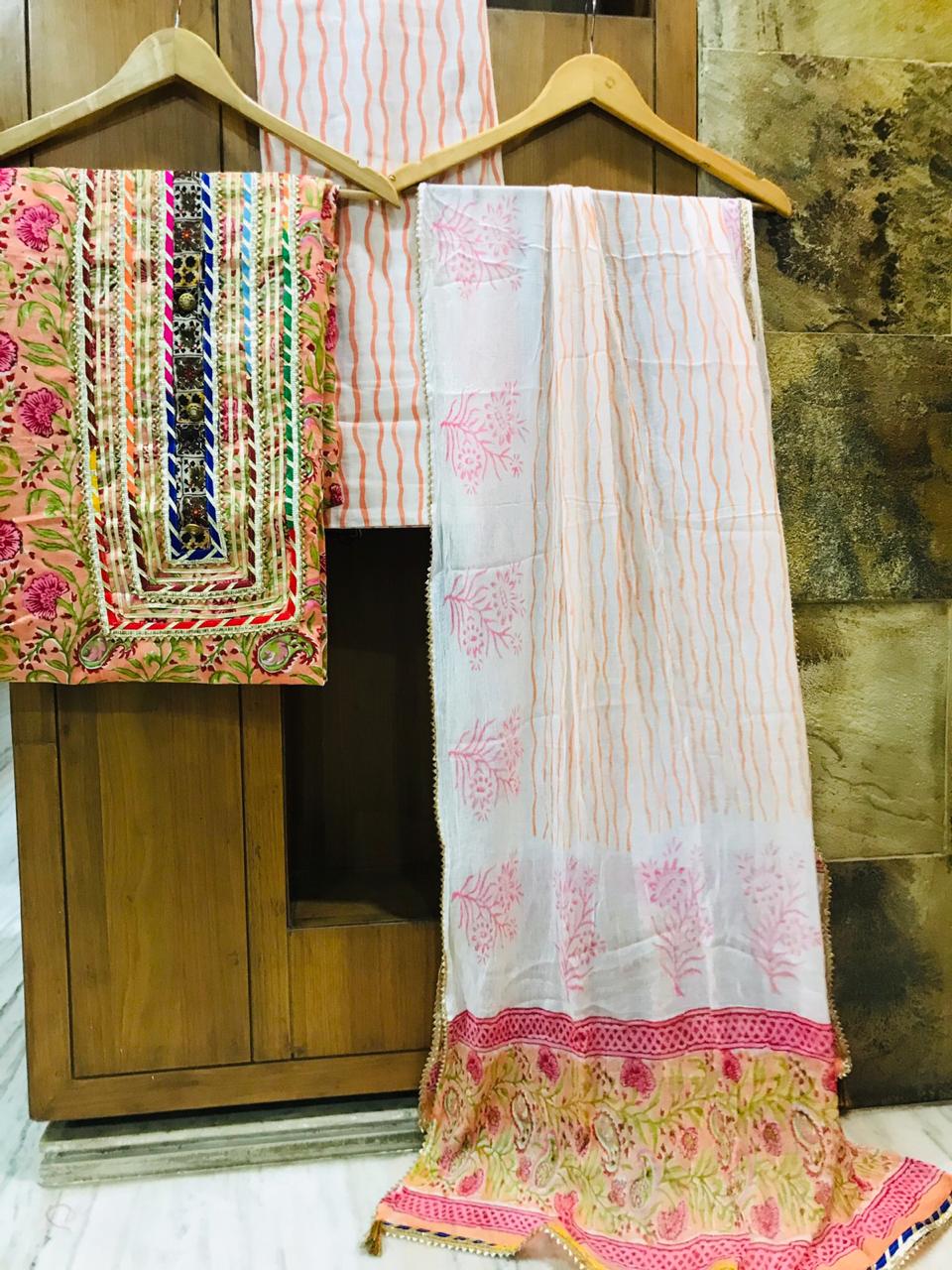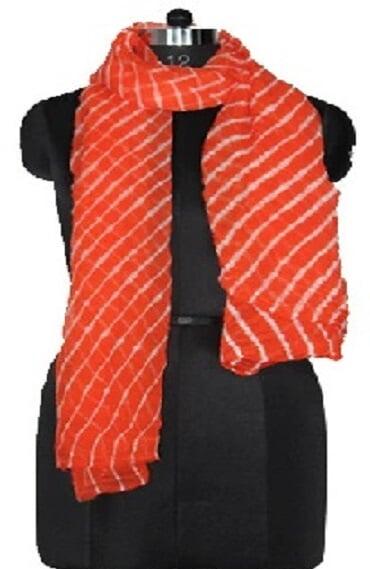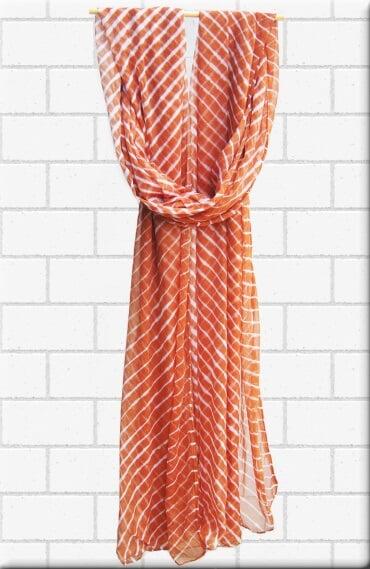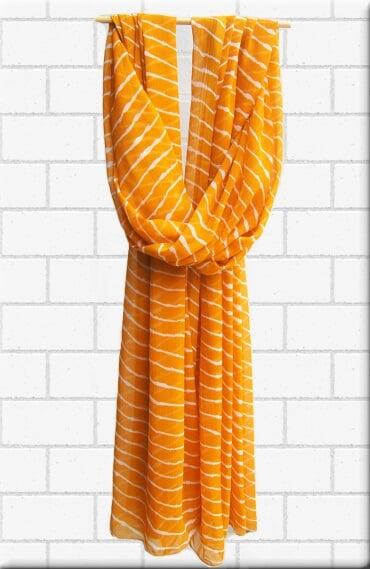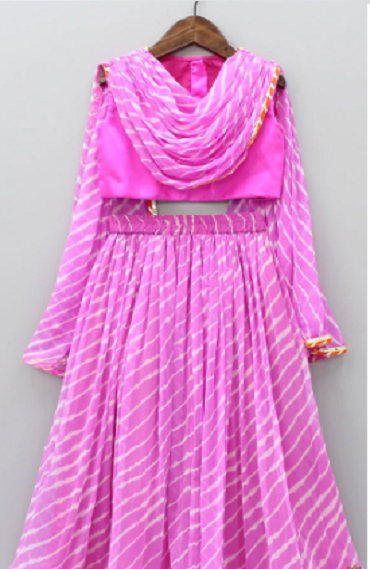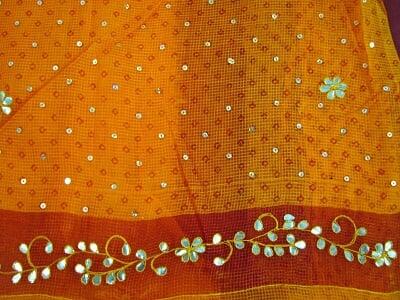The textiles of Rajasthan represent a mixture of vibrant colors & royal ancestry. As the fabrics in this state are woven with intricate delicacy & extreme attention to detail, it is highly recommended across the world to buy these textiles from the locals of Rajasthan and not from any urban markets. A vast variety of world famous textile products are available in Rajasthan. Bedsheets, Quilts, Kurtis, Dress materials etc. A major portion of textile and apparel exports go to the U.S and EU from the South Asian countries. Exports of articles of apparel & clothing accessories and other made up textile articles, worn clothing and worn textile articles, rags etc. are also done on a large scale. Lets dive into the rich history of Rajasthani textiles.
Bagru Printing
Bagru cloth is created by natural dyeing & using an interesting hand block printing method practiced exclusively by the Chippa community. It is one of the traditional techniques of printing with natural color. The process starts from preparing the cloth to finished printed fabrics through their indigenous methods. Motifs having some specialty are transferred onto light colored background with wooden blocks following two styles direct and resist style.
Bandhani
Bandhani
Bandhani is also known as bandhej, and piliya. Bandhani (Derived from the Sanskrit word bandh, which means to bind and tie) is a tie-dye fabric embellished by plucking of the cloth using fingernails. It is a type of tie and dye textile which is adorned by plucking the cloth into many bindings, that form a design. The designs include Ekdali (single knot), Trikunti (three knots), Chaubandi (four knots), Dungar Shahi (mountain pattern), Boond (small dot with a dark center), Kodi (teardrop shaped) and Laddu Jalebi (Indian sweets). Colours specially used in Bandhani are yellow, red, blue, green & black. Bandhej sarees are known for their lively colors enhanced with beautiful dotted prints. Bandhej is very important to Jaipur. Many lead designers are using bandhej in their collection and even many fashion retailers are also using bandhej in their contemporary designs. It is most popularly founded in different markets of Jaipur such as Johari Bazaar, Kishanpole Bazaar.
Leheriya or Leheria
LEHERIA (or leheriya) literally means waves. When an artisan creates a wave like pattern on cloth, it termed as Leheriya. It is a traditional style of tie dye practiced in Rajasthan. It is the dyer’s extraordinary skill that paints magic onto a simple cotton, georgette, chiffon or silk cloth. The artisans use varied colors and shades of pink, blue, green, yellow and purple. Nowadays, multi-colored leheriya dupattas and embroidered black leheriya dupattas are designed by many Indian designers and brands. The manufacturer ties the cloth and folds it spirally to create a linear/striped pattern on the cloth. Once the cloth is dipped in the color solution, the untied sections of the cloth gain the color. The tied part of the cloth remains unaffected and hence, there emerges linear pattern on the cloth. Leheriya symbolizes the unique and rich cultural heritage of Rajasthan. Having its roots in deserts of Rajasthan, this majestic style of dying is renowned world-wide.
Kota Doria
Kota Doria
Kota Doria is a unique blend of cotton and silk in a square check pattern. The silk provides the shine while the cotton provides strength to the fabric. Kota Doria is a very fine weave and weigh very less. Its special weaving style that makes the final fabric translucent and light. Its light, airy and comfortable feeling makes it first choice for the summer and its softness and transparency makes it graceful and part of fashion. Kota Doria in rainbow shades and glittered with gold and brilliant colors. Shades of lilac, white, blue, slate, mustard, orange, black & mauve were the base of patterns that moved from floral, dots and abstract to swirls. It’s getting manufactured in Kota region.

















































